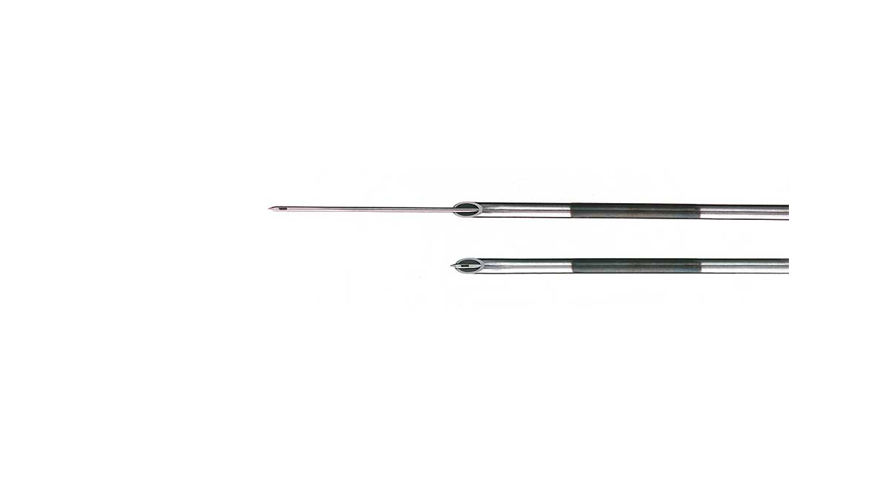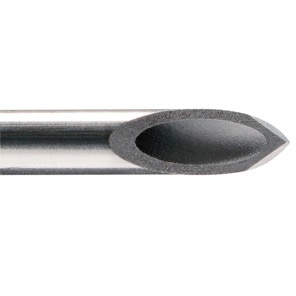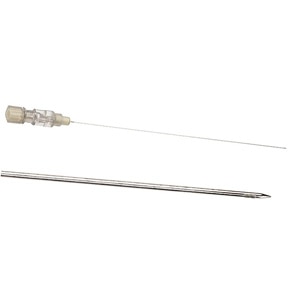The BD® Whitacre Needles are manufactured with proprietary needle tipping, side-port and unique low-glare hub technologies.


- Overview
- Products & Accessories
- EIFU & Resources
- FAQ
They are available in different sizes with lengths ranging from 90 mm to 119 mm and gauges from 22 G to 27 G. High flow BD® Whitacre needles improve flow rate and speed of cerebrospinal fluid (CSF) visualisation1.
- Better post-operative patient experience
- Enhanced precision
- From a trusted partner
Better post-operative patient experience
With BD® Whitacre Spinal Needles that minimise the risk of postdural puncture headache (PDPH)2,3,4
Enhanced precision
With BD® Whitacre Spinal Needles that enable visualisation of CSF, aiding proper needle placement.
From a trusted partner
With a range of products and configurations to meet anaesthesia needs throughout your facility.
BD® Whitacre Spinal Needles yield a distinct tactile "click" or "pop" as the pencil-point penetrates the dura, alerting the clinician of proper placement.
Pencil-point needles like the BD® Whitacre Spinal Needles have been shown to minimise the risk of PDPH compared to larger gauge, cutting-point needles²˒³˒⁴.
The BD® Whitacre Spinal Needle is supported by 25+ independent published studies.
The BD® Whitacre Spinal Needle’s clear hub enables anaesthesiologists to visualise CSF for proper needle placement.
Precision-formed side hole helps directional flow of anaesthetic agents and helps reduce the possibility of straddling the dura⁵.
References
- Carson DF, Serpell MG. Clinical characteristics of commonly used spinal needles. Anaesthesia. 1995;50(6):523-525.
- Buettner J, Wresch KP, Klose R. Postdural puncture headache: comparison of 25-gauge Whitacre and Quincke needles. Reg Anesth. 1993; 18(3): 166–169.
- Corbey MP, Bach AB, Lech K, et al. Grading of severity of postdural puncture headache after 27-gauge Quincke and Whitacre needles. Acta Anaesthesiol Scand. 1997; 41(6): 779–784.
- Santanen U, Rautoma P, Luurila H, et al. Comparison of 27-gauge (0.41-mm) Whitacre and Quincke spinal needles with respect to post-dural puncture headache and non-dural puncture headache. Acta Anaesthesiol Scand. 2004; 48(4): 474–479.
- Urmey WF, Stanton J, Bassin P, Sharrock NE. The Direction of the Whitacre Needle Aperture Affects the Extent and Duration of Isobaric Spinal Anesthesia. Anesth Analg 1997;84:33-41
Please note, not all products, services or features of products and services may be available in your local area. Please check with your local BD representative.
BD-22351
BD's collection of literature on industry and on our offerings gives you information you can use to continue striving for excellence.
BD offers training resources to help improve your clinical practices as part of our goal of advancing the world of health.
References
- Carson DF, Serpell MG. Clinical characteristics of commonly used spinal needles. Anaesthesia. 1995;50(6):523-525.
- Buettner J, Wresch KP, Klose R. Postdural puncture headache: comparison of 25-gauge Whitacre and Quincke needles. Reg Anesth. 1993; 18(3): 166–169.
- Corbey MP, Bach AB, Lech K, et al. Grading of severity of postdural puncture headache after 27-gauge Quincke and Whitacre needles. Acta Anaesthesiol Scand. 1997; 41(6): 779–784.
- Santanen U, Rautoma P, Luurila H, et al. Comparison of 27-gauge (0.41-mm) Whitacre and Quincke spinal needles with respect to post-dural puncture headache and non-dural puncture headache. Acta Anaesthesiol Scand. 2004; 48(4): 474–479.
- Urmey WF, Stanton J, Bassin P, Sharrock NE. The Direction of the Whitacre Needle Aperture Affects the Extent and Duration of Isobaric Spinal Anesthesia. Anesth Analg 1997;84:33-41
BD-22351


